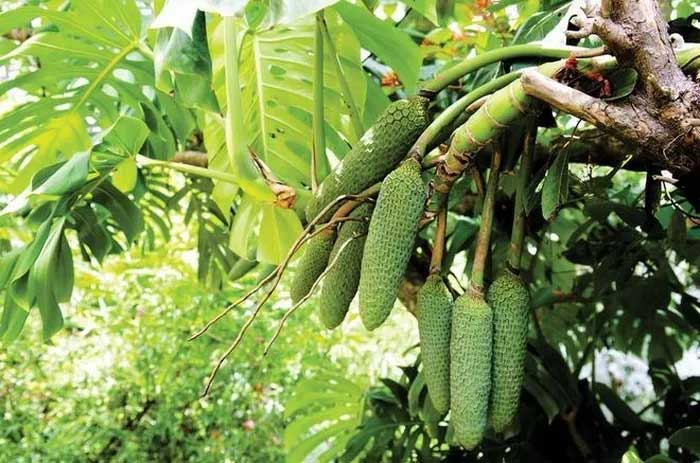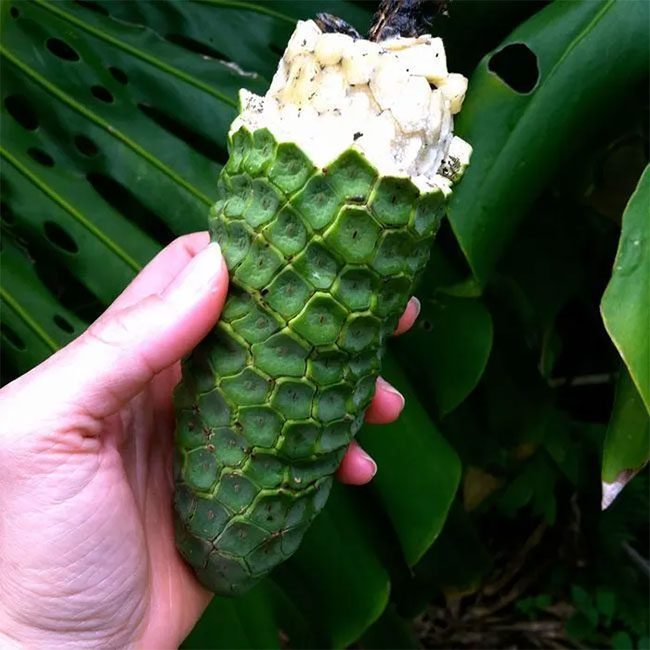The Monstera deliciosa fruit takes nearly a year to ripen, and it can only be eaten when it is fully ripe. It has a unique flavor, reminiscent of a blend of banana, pineapple, and mango.
Monstera deliciosa (commonly known as Swiss cheese plant) is widely cultivated as a houseplant due to its distinctive leaf color and shape. Few people realize that its fruit is edible and quite delicious, but it comes with potential risks.

Monstera deliciosa can grow over 20 meters tall, with leaf spans exceeding 1 meter.
The Monstera deliciosa fruit is still relatively unfamiliar to many people; it resembles the appearance of corn that we commonly eat. It originates from temperate regions such as Central America or tropical islands near the equator like Hawaii, Seychelles, Ascension, and the Society Islands.
The name Monstera deliciosa is derived from the English words “Monster” and “Delicious.” The “monster” label comes from the fact that this fruit contains a significant amount of oxalic acid when unripe, which can cause painful burns upon contact.


Unripe Monstera deliciosa fruit contains a lot of oxalic acid.
The majority of the toxin is concentrated in the outer layer of hexagonal scales arranged like a honeycomb. If someone attempts to eat this unusual fruit while it is still green, they risk poisoning.
Research shows that the Monstera deliciosa fruit when unripe is quite toxic. In fact, all parts of the Monstera deliciosa plant are toxic except for the ripe fruit.
Interestingly, the Monstera deliciosa fruit takes nearly a year to ripen, and only when it is fully ripe can it be consumed.

All parts of the Monstera deliciosa plant are toxic, except for the ripe fruit.
The fruit emits a strong aroma during the ripening process, but this scent disappears once it is fully ripe. This is one of the indicators to determine whether the fruit is ready to eat. When ripe, the scales will naturally peel off, revealing the white, banana and pineapple-like flesh that is incredibly delicious inside.
The Monstera deliciosa was discovered by indigenous peoples of the Americas quite early on, as they regarded it as a staple crop during the summer. In many places in Central America, Monstera deliciosa has long been a part of daily family meals.

In many places in Central America, this fruit has become a daily food.
Additionally, this plant is now commonly grown as an ornamental plant. However, when cultivated indoors, it rarely flowers or bears fruit. It is particularly important to warn everyone, especially children, not to chew or eat the leaves.




















































